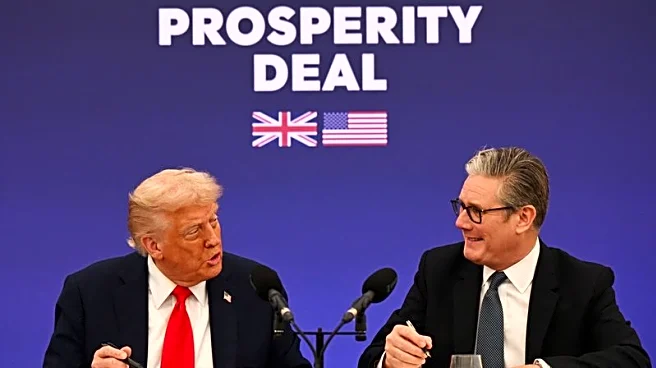What is the story about?
What's Happening?
Prime Minister Narendra Modi has announced the implementation of a new two-slab Goods and Services Tax (GST) regime, describing it as a 'festival of savings' and a step towards economic self-reliance for India. The new GST system simplifies the previous four-slab structure, aiming to ease compliance and reduce prices. Modi emphasized the importance of adopting Indian-made products to boost the country's Micro, Small and Medium Enterprises (MSMEs). He highlighted the historical prosperity of India due to its world-class commodities and urged citizens to embrace swadeshi goods. The announcement comes amid a challenging trade environment with the U.S. and aims to provide a double benefit to the middle class through GST reforms and income tax exemptions.
Why It's Important?
The GST 2.0 implementation is significant as it aims to stimulate domestic manufacturing and consumption, particularly benefiting MSMEs. By reducing tax slabs and encouraging the purchase of Indian-made goods, the initiative seeks to enhance economic self-reliance and reduce dependency on foreign products. This move is expected to lead to substantial savings for households, potentially boosting consumer spending and supporting economic growth. The reforms align with Modi's vision of a 'Developed India' through self-reliance, which could strengthen India's position in global trade and improve the economic outlook for its citizens.
What's Next?
The next steps involve the adoption of the new GST regime by state governments and the continued promotion of Indian-made products. The government will likely monitor the impact of these reforms on the economy and adjust policies to further support MSMEs and domestic consumption. Stakeholders, including traders and manufacturers, are expected to respond positively to the changes, potentially leading to increased production and innovation in the MSME sector. The broader economic implications will unfold as the reforms take effect and consumer behavior adapts to the new tax structure.
Beyond the Headlines
The GST 2.0 initiative may have deeper implications for India's trade policies and international relations, particularly with countries imposing trade tariffs. The focus on self-reliance could lead to shifts in import-export dynamics and influence India's global economic strategy. Additionally, the emphasis on swadeshi goods may foster a cultural shift towards valuing domestic products, impacting consumer preferences and market trends in the long term.
AI Generated Content
Do you find this article useful?














